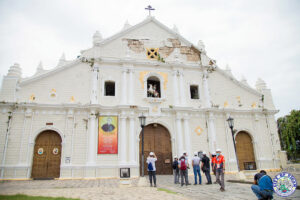Preserving cultural heritage in a modern world

By Brontë H. Lacsamana, Reporter
CULTURAL AGENCIES in the Philippines renewed their commitment to preserving the rich cultural heritage of the country, using social media platforms to call on all Filipinos to support these efforts as part of National History Month this August.
“A big challenge is carrying out the plans for taking care of our cultural heritage. It requires participation from the government, from communities, and from various sectors of society,” said Lawrence Charles E. Salazar, head of the cultural heritage section of the National Commission for Culture and the Arts (NCCA), at an Aug. 2 webinar.
Coming to a consensus as to which cultural properties are relevant is an already difficult task — whether they’re structures, movable items, documents, or practices, he added.
Heritage can also influence behavioral changes towards more sustainable consumption and production patterns.
“When we protect heritage, we’re also protecting the natural environment because most practices and institutions are made with what’s locally available. That’s why it’s important to communities that the sources of materials are protected,” said Mr. Salazar.
The T’boli people of Cotabato use t’nalak, a cloth woven from the fibers of the abaca plant found around Lake Sebu; and Vigan’s heritage sites, which were damaged from the recent north Luzon earthquake, can be restored using clay found in the local environment.
Restoration is easier said than done as it involves a long process, said
Rene R. Escalante, concurrent chairman of both the NCCA and the National Historical Commission of the Philippines (NHCP) at a July 28 briefing.
A team of conservation and restoration experts are in Abra, Ilocos Sur, and Ilocos Norte to conduct damage assessment. Civil engineers from the University of the Philippines — Diliman evaluated the concrete structures of Vigan City Hall, Vigan Cathedral, and other structures in the city.
The Cultural Heritage Act of 2009 allows the government’s cultural agencies to categorize, document, and protect these properties.
“More than the physical characteristics, we have to ensure that the values ascribed to a cultural property are also protected,” he said.
“They help with identity building and nation building, which are very important.”




